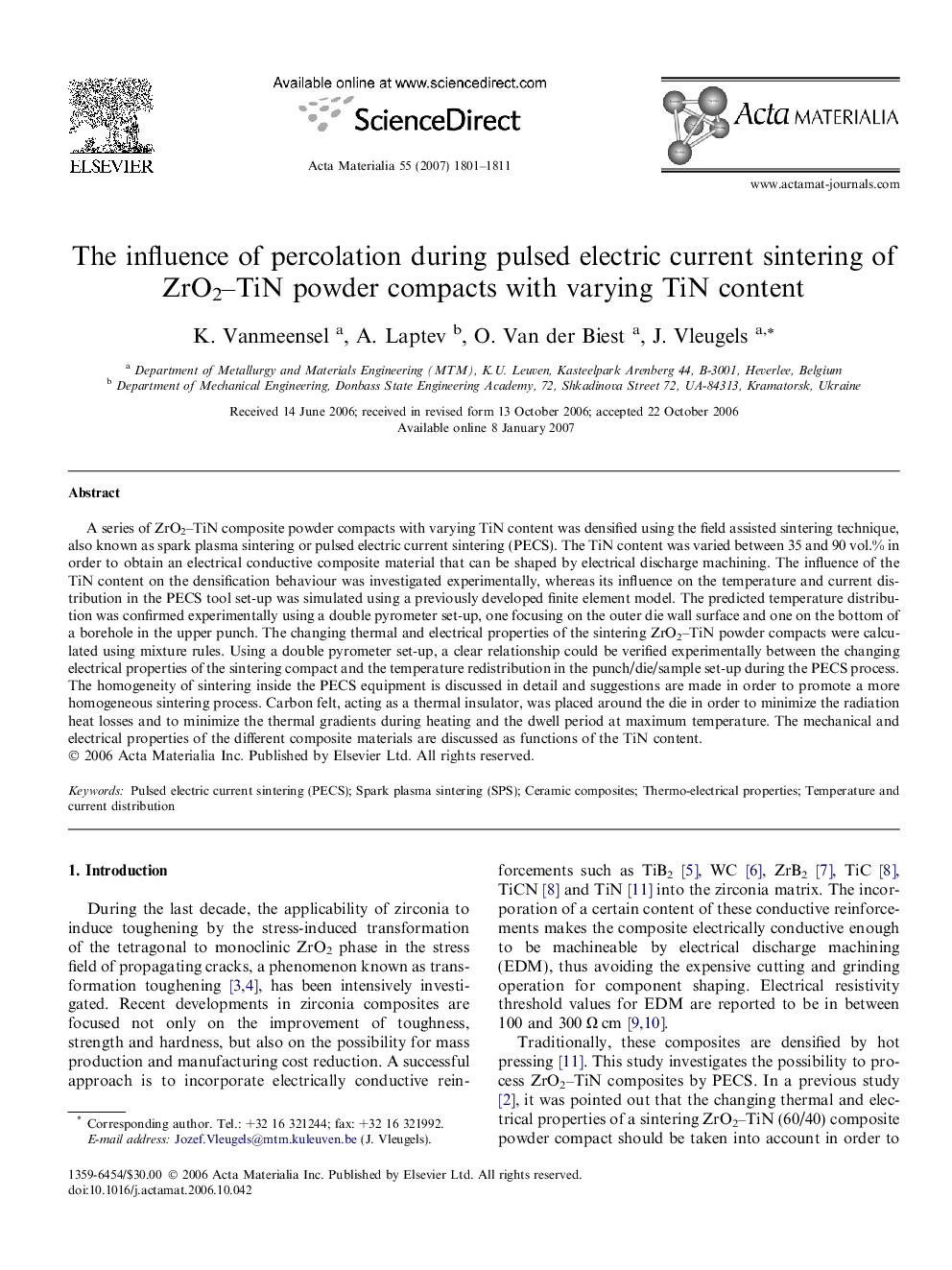| Article ID | Journal | Published Year | Pages | File Type |
|---|---|---|---|---|
| 1450887 | Acta Materialia | 2007 | 11 Pages |
A series of ZrO2–TiN composite powder compacts with varying TiN content was densified using the field assisted sintering technique, also known as spark plasma sintering or pulsed electric current sintering (PECS). The TiN content was varied between 35 and 90 vol.% in order to obtain an electrical conductive composite material that can be shaped by electrical discharge machining. The influence of the TiN content on the densification behaviour was investigated experimentally, whereas its influence on the temperature and current distribution in the PECS tool set-up was simulated using a previously developed finite element model. The predicted temperature distribution was confirmed experimentally using a double pyrometer set-up, one focusing on the outer die wall surface and one on the bottom of a borehole in the upper punch. The changing thermal and electrical properties of the sintering ZrO2–TiN powder compacts were calculated using mixture rules. Using a double pyrometer set-up, a clear relationship could be verified experimentally between the changing electrical properties of the sintering compact and the temperature redistribution in the punch/die/sample set-up during the PECS process. The homogeneity of sintering inside the PECS equipment is discussed in detail and suggestions are made in order to promote a more homogeneous sintering process. Carbon felt, acting as a thermal insulator, was placed around the die in order to minimize the radiation heat losses and to minimize the thermal gradients during heating and the dwell period at maximum temperature. The mechanical and electrical properties of the different composite materials are discussed as functions of the TiN content.
